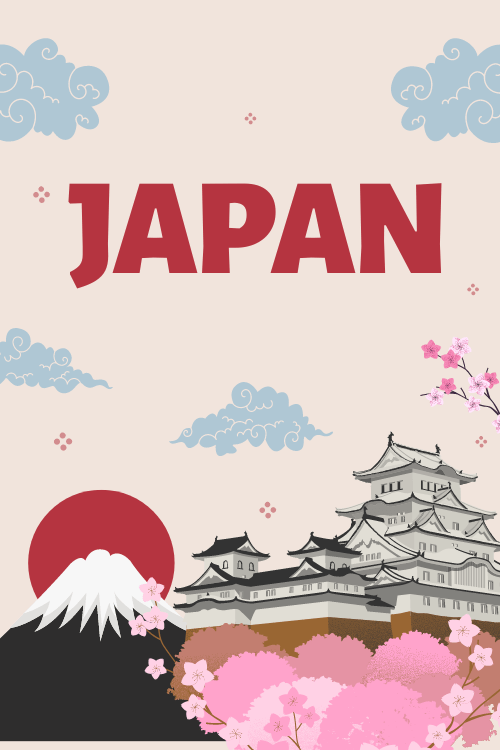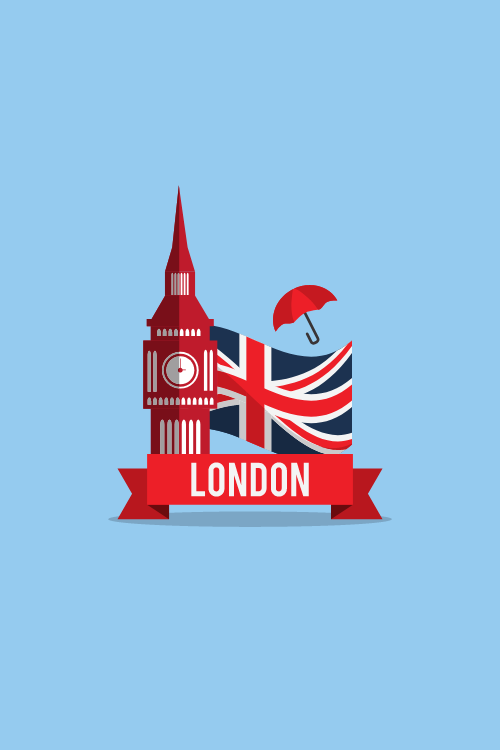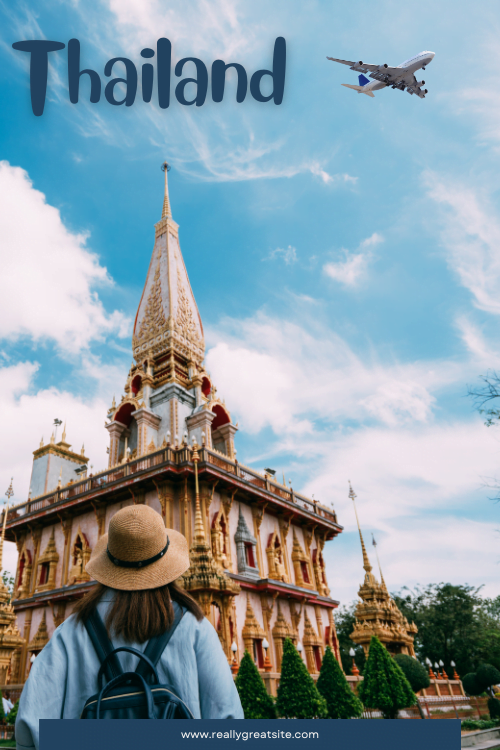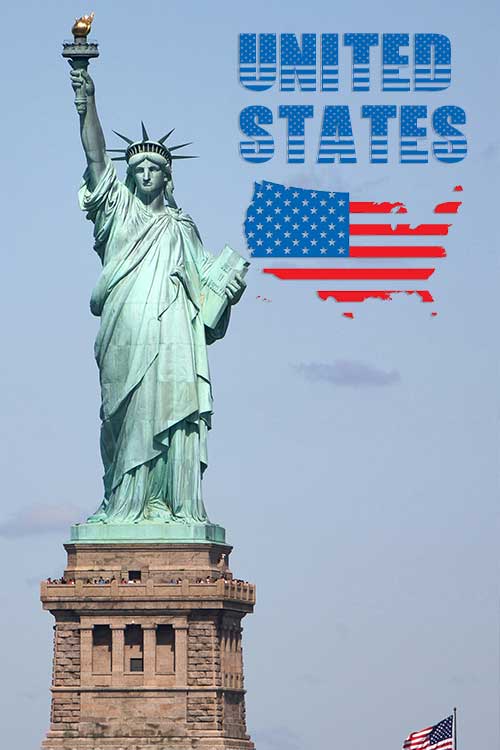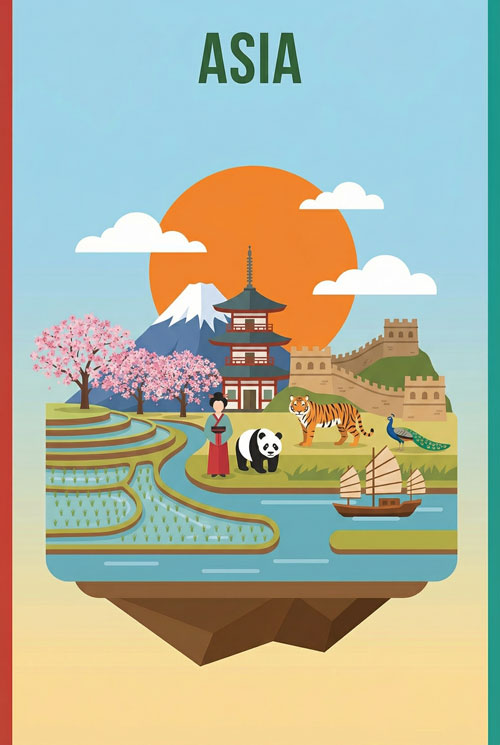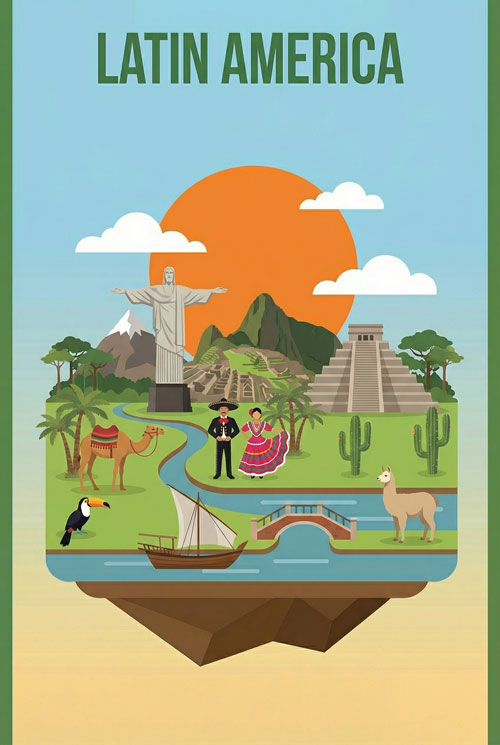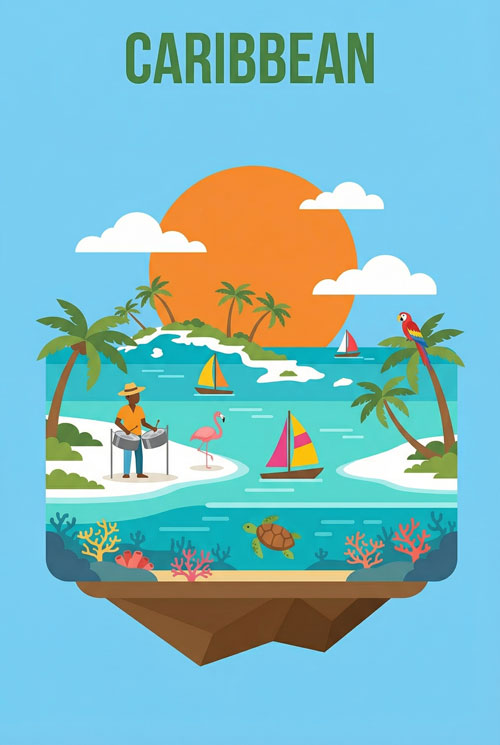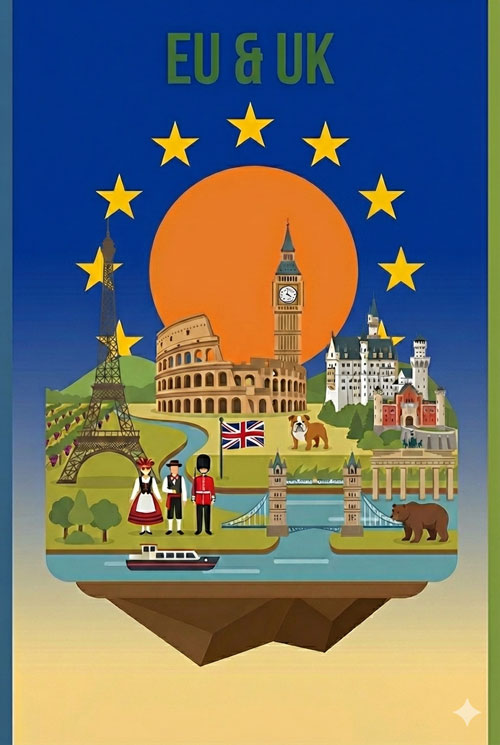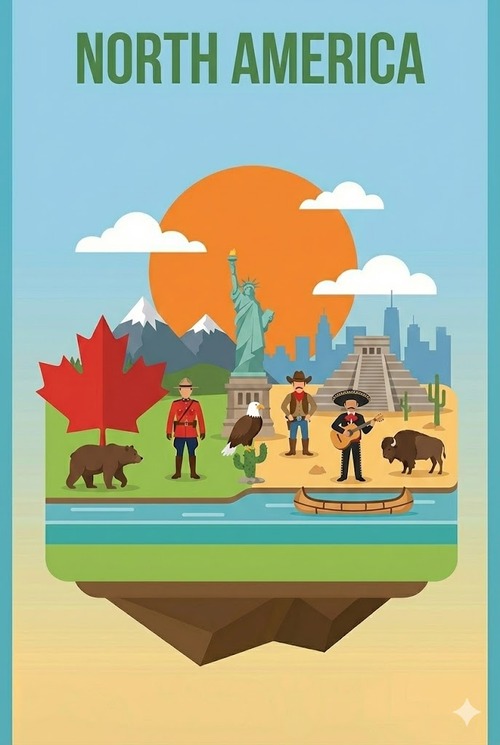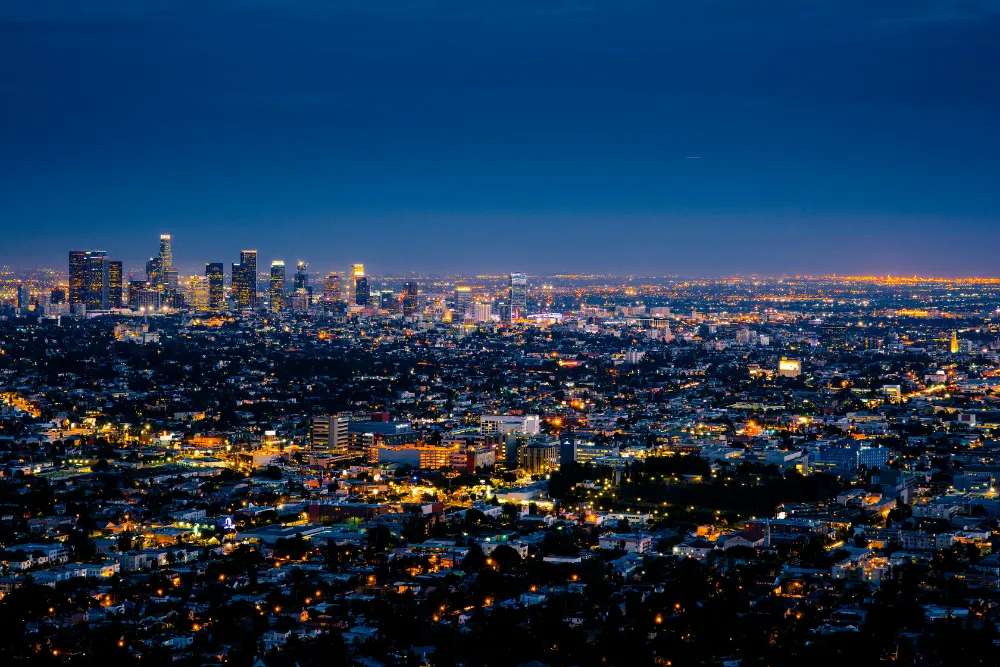eSIM USA
The Best Time to Visit LA: Your Ultimate LA Trip Planner
Welcome to Los Angeles, a vibrant, sprawling metropolis renowned for its endless sunshine, the glittering entertainment industry, diverse cultural tapestry, and iconic landmarks. Planning a trip to this dynamic city can be an exciting endeavor.
However, determining the “best time” to visit is not a one-size-fits-all answer. The ideal period for a visit truly depends on what a traveler prioritizes – whether it is perfect weather, avoiding crowds, adhering to a strict budget, or experiencing specific events and activities.
This comprehensive guide will meticulously break down Los Angeles’s year-round climate, tourist seasons, pricing trends, major events, and the most opportune times for various activities, helping every reader pinpoint the perfect moment for their unique LA adventure.
LA at a Glance: Your Quick Guide to the Best Times
For travelers seeking immediate answers, this quick guide provides the core information in an easy-to-read format.
| Category | Recommended Time | Key Reason |
| Best Time for Great Weather | March to May & September to November | Mild temperatures, clearer skies, less smog |
| Best Time for Budget Travelers | January to February | Best deals on flights and accommodation, fewer crowds |
| Best Time to Avoid Crowds | January to February & Mid-September to Mid-November | Post-holiday lull, schools in session |
| Best Time for Beach Lovers | June to September | Warmest water temperatures, ideal weather for beach activities |
| Best Time for Theme Parks | March to May & September to November (weekdays) | Milder weather, thinner crowds, shorter lines |
| Best Time for Hiking & Outdoors | Spring (March-May) & Fall (September-November) | Comfortable temperatures, blooming landscapes, unique autumn colors |
Los Angeles Through the Seasons: A Detailed Breakdown
Understanding Los Angeles’s unique climate is fundamental to planning a successful trip. The city boasts a mild to hot year-round climate, predominantly dry, and classified as borderline Mediterranean and semi-arid. This classification signifies distinct seasonal changes in rainfall, characterized by dry summers and a winter rainy season.
Throughout the year, temperatures in Los Angeles typically fluctuate between 48°F (9°C) and 85°F (29°C), rarely dipping below 42°F (5°C) or climbing above 93°F (34°C). Summers are generally clear, with August often experiencing the clearest skies, clear or partly cloudy 90% of the time. Conversely, the cloudier period extends from early November to late April. Los Angeles is famously sunny, enjoying approximately 292 days of sunshine annually.
Regarding precipitation, the wetter season spans from late November to late March, with February typically being the wettest month, averaging 3.3 inches of rain. A significant 92% of the annual precipitation occurs between November 1 and April 30. In contrast, the dry season runs from May through October, with July and August experiencing virtually no rainfall.
While generally dry, particularly in summer when heat tends to prevent rain, there is a notable trend of increasing humid heat events in frequency and intensity since 1950, partly attributed to warming sea surface temperatures. This suggests that while the overall climate is dry, there are specific periods, especially in winter, and conditions, such as humid heatwaves, where rain and humidity become significant factors. Travelers should therefore not assume a complete absence of rain or humidity, and this variation should be considered for accurate packing and planning.
Los Angeles also faces specific extreme weather considerations. Powerful, dry Santa Ana winds typically blow down from the mountains towards the Southern California coast from fall into January. Recent data indicates a shift, with more events occurring in December and January. These winds can reach near hurricane strength, up to 60-70 mph, and significantly elevate the risk of wildfires, especially during dry conditions.
These powerful winds can render outdoor activities hazardous and impact air quality due to smoke. Thus, while fall and winter can offer pleasant weather and fewer crowds, visitors should be explicitly aware of potential wildfire risks and associated air quality issues during Santa Ana wind events, particularly if planning outdoor activities in canyon or wildland-adjacent areas.
Furthermore, Los Angeles functions as an urban heat island, meaning city areas tend to be warmer than surrounding rural areas. Heatwaves do not affect every part of Los Angeles uniformly; coastal regions remain cooler due to their proximity to the Pacific Ocean and coastal moisture, while valley regions, such as San Fernando and Riverside, typically experience drier and hotter conditions.
This geographical variation means that the perception of “LA weather” is not uniform across the vast metropolitan area. A traveler primarily focused on beach activities might find summer temperatures tolerable due to coastal moderation, whereas someone planning extensive inland sightseeing, like visiting Universal Studios or exploring Hollywood, might find the valley heat too intense. This highlights the importance of considering the specific areas within Los Angeles where one plans to spend most of their time when evaluating the most comfortable weather conditions.
Spring in LA (March – May): Blooms, Mild Weather & Fewer Crowds
Spring in Los Angeles brings comfortable temperatures, with daily highs generally around 75°F (24°C) and lows rarely dropping below 45°F (7°C). The likelihood of showers is low.
However, visitors should be aware of the phenomena known as “May Gray” and “June Gloom,” where morning coastal fog can overcast the beaches until the afternoon, though the sky typically clears by later in the day.
This season offers numerous advantages for travelers. The temperatures are ideal for comfortably exploring the city. Landscapes burst into bloom, making botanical gardens like Descanso Gardens particularly vibrant.
Spring generally sees lighter crowds as schools are typically in session, making it a more convenient time to visit attractions. This period is widely considered a “shoulder season,” offering a balance between good weather and manageable crowds.
The mild weather and occasional overcast conditions, particularly during “May Gray,” can make outdoor activities such as hiking more comfortable by reducing direct sun exposure. Additionally, these months often boast better air quality.
The primary disadvantage remains the “May Gray” and “June Gloom” phenomena, which, while often clearing, can lead to overcast mornings, especially near the coast. It is also worth noting that while generally less crowded, specific spring break weeks can see tourist spots, particularly theme parks, fill up quickly.
Key events and activities during spring include various music festivals, with Los Angeles serving as a home base for attendees heading to Coachella and Stagecoach in the Californian desert. It is also the perfect time for garden tours to witness the blooming flora.
For theme park enthusiasts, March to May is considered a “sweet spot” for Universal Studios Hollywood, offering milder weather and thinner crowds, especially on weekdays. Disneyland also experiences potentially lower crowd levels through mid-March. Hollywood tours benefit from the perfect weather, clear views, and fewer crowds, making spring an ideal time for bus tours.
Summer in LA (June – August): Sun, Surf & Peak Season Buzz
The warm season in Los Angeles extends from July 1 to September 30, with average daily high temperatures consistently above 81°F (27°C). August stands out as the hottest month, with average highs of 84°F (29°C) and lows of 66°F (19°C). Temperatures can occasionally reach into the 90s (32°C+) for brief periods. Summers are typically arid and clear. The “June Gloom” phenomenon, characterized by overcast mornings, can persist into June. Furthermore, humid heatwaves have been observed to increase during this period.
Summer offers the quintessential Los Angeles beach experience, with abundant sunshine and inviting waves. This is the prime time for beach lovers, as it boasts the warmest water temperatures and the most agreeable weather for sunbathing, swimming, and playing in the sand. The long, sunny days are perfect for vibrant outdoor activities like beach volleyball, surfing, and exploring scenic trails. Theme parks, including Universal Studios Hollywood and Disneyland Resort, operate with extended hours during these months.
Despite these appeals, summer also presents several challenges. It is the period with the hottest temperatures, particularly inland and in valley regions. Thick smog can be an issue, which sometimes deters visitors.
Summer is unequivocally the peak tourist season, attracting the maximum number of visitors due to school vacations and the strong appeal of warm weather activities. This influx translates to longer wait times and crowded attractions at theme parks. Hotels and resorts quickly become booked and are generally more expensive. The “June Gloom” can also lead to overcast mornings, especially along the coast.
It is interesting to note that despite the potential for sweltering temperatures and smog, summer remains the period with the highest tourist numbers. This phenomenon is largely driven by the convenience of school holidays, which dictates travel schedules for many families. The strong allure of Los Angeles’s quintessential beach and outdoor summer vibe often outweighs the less-than-ideal weather conditions or higher costs for these travelers.
Key events and activities during summer include the colorful and vibrant LA Pride celebration in June and Independence Day festivities on July 4th, which attract many tourists. The Hollywood Bowl also hosts its popular summer concert season, offering live performances in an iconic setting. Beach activities, such as sunbathing, swimming, surfing, and beach volleyball, are at their peak during these months.
Fall in LA (September – November): Golden Hues & Smart Savings
Fall ushers in pleasant weather to Los Angeles, with comfortable temperatures typically ranging from 54-79°F (12-26°C). Skies are generally clearer, and the air feels crisper, enhancing the enjoyment of sightseeing. The rainy period begins around mid-October.
This season offers numerous advantages. Temperatures are ideal for exploration without the intense heat of summer. Following the summer rush, most children return to school, leading to significantly reduced crowd levels compared to the peak season. This period is a prime shoulder season, offering a more relaxed travel experience.
Fall is often the most advantageous time for budget travelers, with better prices on flights and accommodation. The clear skies are excellent for sightseeing and photography. Ocean temperatures also remain warm enough for beach activities through early October.
However, there are a few considerations. Thanksgiving, which falls on the last Thursday of November, is one of the most expensive times to travel in the USA, leading to increased crowds and prices. Additionally, the fall season marks the typical onset of Santa Ana winds, which increase the risk of wildfires and can impact air quality and travel plans.
Fall is not just a good time to visit; it is a strategic time for value-conscious travelers. It offers a “sweet spot” where the weather is excellent, major holiday crowds are absent (except for Thanksgiving), and costs for both flights and hotels are significantly lower. This combination allows for an optimized trip that balances a quality experience with budget considerations.
Key events and activities during fall include various film festivals, such as the Los Angeles Film Festival in September. The L.A. County Fair also takes place in September. Vibrant cultural celebrations like Halloween in October and Dia de los Muertos in November are prominent. Universal Studios hosts its popular Halloween Horror Nights.
For outdoor enthusiasts, prime hiking conditions begin in autumn, offering comfortable weather and unique autumn colors in oak woodlands and wet canyons. While spring is often cited for hiking, fall is an understated and potentially superior time for this activity in Los Angeles, providing distinct seasonal beauty and consistently comfortable conditions preferred by locals.
Theme parks also benefit from the fall season; September to November offers a balance of pleasant weather and manageable crowd sizes for Universal Studios Hollywood. Disneyland also experiences lower crowds from mid-September through mid-November. Hollywood tours are also excellent during fall due to pleasant weather, fewer crowds, and clearer skies.
Winter in LA (December – February): Mild Days & Cultural Delights
Winter in Los Angeles, from late November to late March, is characterized by cooler temperatures, with average daily highs below 70°F (21°C). December is typically the coldest month, with average lows of 48°F (9°C) and highs of 67°F (19°C).
This period is also the wettest season, with February generally experiencing the most wet days. Despite the increased chance of rain, winter months often remain sunny and pleasant, offering mild-to-warm temperatures, generally ranging from the mid-40s to low 70s Fahrenheit.
Winter offers several compelling reasons to visit. Temperatures are generally comfortable for touring, especially inland. This season is typically the off-season for crowds, providing a significantly more relaxed atmosphere to explore attractions at a leisurely pace.
Flights, hotels, and resorts often present excellent deals during January and February. Furthermore, winter provides unique activity opportunities, such as whale watching, skiing or snowboarding in the nearby San Gabriel Mountains, and specific garden tours that are best enjoyed in cooler weather. These distinct activities reframe winter from merely a “less crowded” period to one offering unique, specialized experiences, adding significant value for niche travelers.
However, there are downsides. The higher chance of rain, particularly in February, means travelers should be prepared with raincoats. Pacific waters tend to be cooler, often below suitable conditions for swimming.
While generally less crowded, the period from Christmas to New Year’s brings peak visitor numbers and higher prices. Award season, typically from January to March, can also draw celebrities and increase crowds. Theme parks may also adjust their operations, with reduced hours, more attractions closed for refurbishment, and fewer entertainment options.
This means that while winter is excellent for budget travelers and those seeking fewer crowds, it requires careful planning to strategically avoid the major holiday periods and key award season dates, which can create mini-peak seasons within the broader off-season.
Key events and activities during winter include Christmas and New Year celebrations, which see Los Angeles streets packed with tourists enjoying parties and parades like the iconic Rose Bowl Parade. January attracts many Chinese tourists for Chinese New Year celebrations.
The prestigious award season, from January to March, features events like the Sundance Film Festival (late January) and the Academy Awards (February), drawing celebrities and industry professionals. Winter is the peak season for spotting gray whales migrating along the coast. Skiing and snowboarding are possible in the nearby San Gabriel Mountains. During the wet season, tourists and locals often prefer indoor activities.
Choosing Your LA Adventure: Best Times by Travel Style
Los Angeles offers a diverse range of experiences, and the “best” time to visit often aligns with specific travel priorities.
The Cheapest Time to Go
For budget-conscious travelers, January and February are generally the least busy months for Los Angeles, presenting excellent deals on flights, hotels, and resorts.
The shoulder seasons, spanning March to May and September to November, also offer better value compared to the peak summer months, especially if major holidays like Thanksgiving are avoided. It is important to note that “cheap” often correlates with “fewer crowds” and a higher chance of “rainier weather,” requiring a trade-off for those prioritizing cost savings.
The Best Time for Families (Theme Parks & Kid-Friendly Fun)
When planning a family trip centered around theme parks like Universal Studios Hollywood and Disneyland, strategic timing can significantly enhance the experience. Mid-September through mid-November (before Thanksgiving) and mid-January through mid-March are ideal for potentially lower crowds and shorter wait times at Disneyland.
For Universal Studios, March to May and September to November are considered “sweet spots,” balancing mild weather with thinner crowds, particularly on weekdays. Across all theme parks, weekdays, specifically Tuesday to Thursday, are consistently less crowded than weekends. For families, the key lies in balancing school holidays, when travel is most feasible, with crowd avoidance. Visiting during shoulder seasons or opting for weekdays within peak periods can maximize enjoyment and minimize wait times.
The Best Time for Beach Lovers
The period from late May to early October is ideal for beach activities in Los Angeles, with the very best conditions, including the warmest water temperatures and most favorable weather for sunbathing and swimming, typically found from June to September.
Peak summer months offer the quintessential beach experience, but travelers should anticipate significant crowds. For a more tranquil beach day, early fall, specifically September and October, still provides warm water with the added benefit of fewer crowds. Conversely, winter months are less suitable for swimming due to cooler Pacific waters. To further reduce crowds, aiming for weekday visits between 10 a.m. and 4 p.m. is recommended.
The Best Time for Outdoor Enthusiasts (Hiking & Nature)
Spring, from March to May, offers comfortable temperatures, blooming landscapes at places like Descanso Gardens, and the “May Gray” phenomenon can make hiking more comfortable by reducing direct sun.
Fall, from September to November, is considered a prime hiking season by locals, providing comfortable weather and unique autumn colors in oak woodlands. Los Angeles County generally offers excellent hiking conditions almost any time of year due to its diverse topography and localized climates, with dry weather and moderate temperatures being common.
In winter, cooler weather is conducive for garden tours and exploring tide pools. While summer is popular for hiking in areas like Griffith Park or the Santa Monica Mountains, preparation for heat and sun is essential.
The Best Time for Culture & Events
Los Angeles boasts a rich cultural calendar throughout the year. The peak event season generally runs from April to October.
Summer features vibrant celebrations like LA Pride in June and Independence Day on July 4th, along with the Hollywood Bowl summer concert season. Fall brings various film festivals, such as the LA Film Festival in September, the LA County Fair also in September, and significant cultural celebrations like Halloween and Dia de los Muertos. Universal Studios also hosts its popular Halloween Horror Nights.
Even the wet winter season is packed with major cultural events, including Christmas and New Year celebrations (with the Rose Bowl Parade), Chinese New Year, and the prestigious award season. Universal Studios also celebrates Grinchmas during winter. Travelers should check specific event calendars well in advance, as interests will dictate the most opportune time.
The Best Time for Hollywood & Sightseeing
Spring, from March to May, offers perfect weather, clear views for photography, and fewer crowds, making it ideal for Hollywood bus tours and attractions such as Griffith Observatory and the Getty Center.
Fall, from September to November, is another excellent period, providing pleasant temperatures, fewer crowds, better deals, and clear skies for sightseeing. Winter, from December to February, offers milder temperatures and significantly reduced crowd levels (outside of major holidays and award season), allowing for a more relaxed pace at attractions.
Attractions like Griffith Observatory and The Getty Center are delightful year-round, but weekday visits are recommended to avoid crowds. For bus tours, starting early in the morning (8 AM – 11 AM) on weekdays (Monday-Wednesday) can offer less traffic and clearer photos.
The Best Time for Shopping & Nightlife
For shopping, planning visits to outlets during weekdays or early mornings can lead to smaller crowds and potential exclusive discounts. Subscribing to newsletters and following social media accounts of favorite stores can reveal flash sales.
In the Fashion District, most wholesale businesses operate Monday-Friday, 9 a.m. to 5 p.m., while the Santee Alley is open seven days a week, approximately 10 a.m. to 5 p.m., even on holidays.
Regarding nightlife, Sunday through Wednesday nights are often preferred for avoiding crowds and mingling with locals, particularly in areas like West Hollywood. Weekends will naturally offer a more crowded and lively scene.
It is important for travelers to be aware of Los Angeles’s notorious 2 a.m. club curfew, which has fostered a thriving underground after-hours party scene. This counter-culture movement offers a unique, intimate, and often more innovative nightlife experience for those seeking to extend their evening beyond conventional club hours. Travelers seeking a deeper or more authentic party experience should explore this aspect of LA’s nightlife.
Stay Connected in Los Angeles with eSIM4.com
As soon as a traveler lands in the sprawling city of Los Angeles, immediate data access is crucial. It is essential for navigating the city, booking rideshares, looking up restaurant reviews, staying in touch with loved ones, and sharing incredible moments in real-time.
Traditional connectivity methods often present significant challenges. Relying on a home carrier’s international roaming can lead to surprisingly high bills upon return. The process of finding and purchasing a local physical SIM card often involves long queues at the airport, potential language barriers, and the inconvenience of removing and safeguarding a primary SIM card. Physical SIMs also carry a higher risk of being lost or stolen compared to their digital counterparts.
The modern solution to these connectivity dilemmas is an eSIM. An eSIM is a digital SIM that allows travelers to download a data plan directly to their compatible smartphone, offering a convenient and affordable way to stay connected. This technology allows for easy activation; a traveler can purchase and download an eSIM plan for Los Angeles before even leaving home and activate it the moment they land, eliminating the need for physical card swapping.
Most eSIM-compatible phones support dual SIM capability, meaning a traveler can use both their home physical SIM (for calls/texts if their carrier offers cheap international rates) and their travel eSIM for data, providing optimal flexibility. Furthermore, an eSIM offers enhanced security as it cannot be physically removed if a phone is lost or stolen.
With an eSIM from eSIM4 you can download a data plan for Los Angeles before you even leave home and activate it the moment you land. No more bill shock, no more airport SIM queues.
Click Here To See Our Prepaid Get Prepaid Mobile Data Plans For United States.

